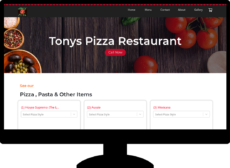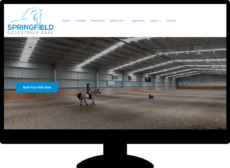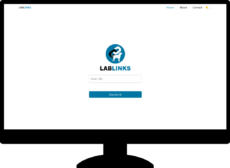
Breaking into China’s digital market starts with smart website design. We need layouts that feel natural to local users and visuals that match cultural cues. We build trust fast and make every click clear and rewarding.
We design mobile first since most traffic comes from phones. Fast load times clear navigation and strong calls to action drive results. We align with SEO best practices and clean code so users find your company and stay longer.
We localize content tone and visuals so our brand feels native. Whether your looking to launch a new website in China or expand your Chinese company abroad we can help with our range of development solutions.
Get into contact with us
Helping drive results for our clients of all sizes






A snapshot of some of our work
What our clients are saying
Why work with AGR Technology for your local website needs?
Understanding Website Design In China

Understanding website design for China starts with user behavior, platforms, and regulation that shape real outcomes. We align Website Design & Development China projects to these factors to drive speed, findability, and conversion across Mainland and global channels.
Local user behavior and UX patterns
- Design dense interfaces that support fast scanning, if the audience expects detail over minimalism.
- Prioritize mobile-first layouts that render flawlessly on mainstream Android devices.
- Integrate QR codes for login, payments, customer service, and O2O journeys.
- Embed WeChat touchpoints for share, customer support, and mini program entry.
- Place trust signals upfront including ICP number in the footer, corporate credentials, and after-sales assurances.
- Localize typography with Chinese system fonts for legibility across OEM browsers.
Core platforms and ecosystems
- Connect WeChat for Mini Programs, Official Accounts, and service chat.
- Optimize for Baidu search and other search engines with SEO with simplified Chinese content and clean HTML.
- Leverage Douyin, Xiaohongshu, and Bilibili for social proof if the product category relies on UGC.
- Extend e-commerce to Tmall, JD, and WeChat Stores for native purchase paths.
Technical foundations for China performance
- Host in Mainland China or deploy a China CDN with edge nodes in key cities.
- Use DNS providers with China nodes for faster resolution across ISPs.
- Compress assets with WebP or AVIF and serve HTTP/2 across all endpoints.
- Replace blocked third party scripts with China accessible equivalents.
- Cache pages aggressively and lazy load images to reduce Time to Interactive.
Baidu friendly SEO and discoverability
- Publish simplified Chinese sitemaps, robots rules, and canonical tags.
- Mark up pages with structured data supported by Baidu where available.
- Implement clean internal linking and flat navigation for faster crawl.
- Localize keywords with user intent for Baidu SERP features, not just translations.
- Serve mobile responsive pages that render without heavy JS frameworks.
Content localization and messaging
- Translate content natively, not literally, and adapt product naming and claims.
- Use clear benefit led copy with proof, examples, and data that match local expectations.
- Localize imagery with relevant context, devices, and UI affordances common in China.
- Provide customer service touchpoints via WeChat, phone, and chat during local hours.
- Display prices in RMB and support Alipay and WeChat Pay to reduce friction.
Compliance, privacy, and security
- Display the ICP number in the footer on Mainland hosted sites per MIIT formats.
- Store and process data in China when architecture or law requires it.
- Publish transparent privacy notices in simplified Chinese.
- Use SSL certificates compatible with legacy Android browsers.
Analytics and optimization stack
- Install Baidu Tongji for local analytics and pair with server side events.
- Connect WeChat analytics for menu taps, mini program funnels, and QR scans.
- Run A B tests with China compatible tools or platform native experiments.
- Track Core Web Vitals for 4G and congested networks common in tier 2 and tier 3 cities.
Cross border architecture choices
- Serve dual infrastructure with Mainland hosting for CN and global CDN for ROW if traffic justifies separation.
- Route content by GeoDNS and language, with user control to switch locales.
- Maintain one codebase with locale specific components to reduce technical debt.
- Mirror critical content across China accessible CDNs to limit packet loss.
UI patterns that convert in China
- Place primary calls to action above the fold with contrast and direct language.
- Use sticky action bars on mobile for chat, call, and buy.
- Provide comparison tables, FAQs, and social proof modules near CTAs.
- Offer QR save options for later conversion from desktop to mobile.
Payments and checkout
- Integrate Alipay and WeChat Pay for one tap mobile payment flows.
- Offer UnionPay, Visa, and Mastercard for cross border transactions.
- Keep checkout within 3 steps, with SMS or WeChat login for speed.
How we bridge China and global markets
- Design one experience that respects China UI norms and Western heuristics.
- Build multilingual UX that keeps parity across Chinese and English content.
- Map acquisition across Baidu, WeChat, and global channels like Google and Meta.
- Align SEO, analytics, and data collection with both China and international rules.
Key market data
| Metric | Value | Date | Source |
|---|---|---|---|
| Internet users in China | 1.09 billion | 2023 | CNNIC 52nd Report |
| Mobile internet users | 1.06 billion | 2023 | CNNIC 52nd Report |
| WeChat MAU | 1.34 billion | Q2 2024 | Tencent earnings |
| Baidu search share China | 60 to 65 percent | 2024 | StatCounter |
| QR code usage for payments | 80+ percent of mobile payments | 2022 | PBOC and industry reports |
Source notes
- CNNIC, Statistical Reports on Internet Development in China, 2023.
- Tencent, Company Announcements and Earnings, 2024.
- StatCounter GlobalStats, China Search Engine Market Share, 2024.
- Ministry of Industry and Information Technology MIIT, ICP registration guidance.
How AGR Technology operationalizes these insights
- Localize UX flows for China while maintaining brand consistency across markets.
- Engineer Baidu friendly websites with clean HTML, fast TTFB, and Chinese metadata.
- Implement China CDNs, ICP filings, and DNS tuning for stable performance.
- Integrate WeChat login, chat, and payments plus Mini Programs where relevant.
- Build multilingual content models that support simplified Chinese and English parity.
- Connect analytics across Baidu Tongji and global tools for unified reporting.
- Execute CRO programs that test China specific UI patterns and copy variants.
Practical checkpoints for your project
- Confirm hosting and ICP plan before design sprints to avoid rework.
- Lock keyword research in Chinese and English before content production.
- Validate payment and invoicing flows for RMB and foreign currencies.
- Map data residency, retention, and transfer paths before launch.
- Run pre launch tests on popular China Android devices and OEM browsers.
If you seek a partner to bridge Website Design & Development China with international standards, we align teams, platforms, and compliance from day one. If your goal targets fast launch or phased rollout, we sequence sprints around ICP, hosting, and content readiness.
Launch Your Global Vision: Expert Website Design & Development for Chinese Companies

As your enterprise joins the trend of Chinese companies expanding outside China, your global website must serve as a compliant, high-conversion, and culturally intelligent digital headquarters. We provide specialized website development China services, delivering world-class, multi-lingual platforms engineered for success in foreign markets. Our strategy goes beyond mere translation, focusing on technical Google SEO for visibility, local payment gateway integration (like PayPal or regional cards), and user experience (UX) design that instills trust with Western and international customers.
Whether you require an advanced e-commerce engine or a professional B2B lead generation site, we ensure your platform meets critical international standards for speed, security (GDPR/CCPA compliance), and cross-browser compatibility, transforming your digital footprint from a local Chinese presence into a powerful, credible global asset that drives sustainable international growth.
UX And Cultural Design Principles
We design cross‑border experiences that feel native in China and credible abroad. We align Website Design & Development China projects to cultural cues, platform norms, and conversion goals.
Visual Language And Color Psychology
We match visual language to Chinese market signals and brand equity. We use richer information density, larger tap targets, and bold CTAs that support fast scanning on mobile.
- Apply color with purpose. Red signals prosperity and action, gold signals premium and celebration, blue signals trust and technology.
- Calibrate contrast for legibility. High contrast supports outdoor usage and lower end screens common in tier‑3 cities.
- Localise iconography. Use platform‑familiar icons like WeChat share, Alipay badge, JD cart, and Tmall crown.
- Balance density with hierarchy. Use modular blocks, numbered lists, and sticky CTAs to drive micro‑conversions.
- Respect symbolism. Avoid pure white for gifting visuals and avoid clock imagery in festive campaigns.
- Maintain brand consistency. Use a core palette and type scale across Chinese and English layouts.
Example components include hero banners with festival motifs, QR‑first signup panels, and badge stacks for payments and logistics.
Reference sources include CNNIC for device usage patterns and Alibaba Design for platform UI standards.
Content Localization And Tone Of Voice
We translate for meaning, not word count. We pair Simplified Chinese copy with intent‑based keywords and clear microcopy that fits Baidu and WeChat contexts.
- Localise semantics. Use native terms like 官方旗舰店 for official store and 正品保障 for authenticity guarantee.
- Align tone to audience. Use concise, benefit‑first language for B2C and evidence‑first language for B2B.
- Map queries to content. Cover how‑to guides, price ranges, specs, and comparison tables for high intent searches.
- Structure copy for Baidu. Use H1 to H3 headings, keyword‑aligned titles, and meta descriptions in Simplified Chinese.
- Support multilingual parity. Maintain content equivalence across Chinese and English to avoid message drift.
- Embed service context. Include operating hours, after‑sales terms, and delivery SLAs common in China.
Examples include product FAQs with return policies, service pages with ICP and privacy disclosures, and WeChat mini program descriptions.
Authoritative references include Baidu Webmaster Guidelines and China Advertising Law for claims and disclosures.
Navigation Density, Trust Marks, And Social Proof
We design navigation for fast scanning and deep exploration on mobile. We use grouped menus, visible search, and QR entry points.
- Structure menus by task. Use labels like 购买, 服务, 方案, 资源, 支持 for commerce and enterprise flows.
- Expose key paths. Use sticky bottom bars for Home, Categories, Chat, Cart, and Me.
- Place QR access upfront. Add WeChat QR in hero, footer, and contact modal.
- Surface trust marks. Display ICP number, business license, China CDN badge, and payment badges like Alipay and WeChat Pay.
- Add social proof. Use customer counts, case logos, star ratings, and review snippets with verified dates.
- Connect service chat. Embed WeChat service account, QQ, and phone click‑to‑call for instant help.
Examples include mega menus with category icons, coupon banners with countdown timers, and assurance rows with logistics partners like SF Express.
Sources include CNNIC for mobile behaviour trends and Nielsen Norman Group for scanning and navigation patterns.
Mobile-First And Social Ecosystem Integration
We design mobile-first experiences that plug straight into China’s social platforms. We align UX, data, and payments across WeChat, Alipay, Douyin, and Baidu for seamless journeys.
| Metric | Value | Source | Date |
|---|---|---|---|
| Internet users accessing via mobile | 99.8% | CNNIC, 53rd Statistical Report | 2024-08 |
Mini Programs And In-App Webviews
We connect websites to Mini Programs and in-app webviews to capture high-intent traffic inside China’s super-apps. We architect WeChat, Alipay, and Baidu Smart Mini Programs for discovery, onboarding, and repeat engagement. We implement H5 pages for Douyin and Kuaishou to support in-feed conversions and live commerce links.
- Design: Unify typography, spacing, and motion across website, Mini Program, and H5 webview components for consistent brand trust.
- Build: Leverage WeChat Mini Program frameworks, Alipay Mini Program APIs, and Baidu Smart Mini Program components for performance at scale.
- Integrate: Connect product feeds, inventory, and pricing via REST or GraphQL for real-time accuracy across channels.
- Authenticate: Use OAuth inside WeChat, Alipay, QQ, and Douyin to enable secure account linking with consented scopes.
- Transact: Enable WeChat Pay and Alipay inside Mini Programs, and UnionPay or Stripe on the global site for cross-border checkout.
- Track: Deploy WeChat analytics, Alipay analytics, Baidu Tongji, and server-side tracking for reliable attribution across closed ecosystems.
We reduce friction inside app sandboxes, if the platform enforces in-app webview constraints. We load H5 content through Tencent X5 and Bytedance kernels with adaptive UA detection. We enable deep links and QR entry, if campaigns run across offline media or influencer posts. We configure scene-based routing, if traffic lands from chat shares, search cards, or live streams.
Practical inclusions:
- Patterns: Use sticky CTAs, tabbed detail blocks, and coupon drawers on PDPs, for example product pages and campaign offers.
- Speed: Target LCP under 2.5s, CLS under 0.1, and request budgets under 60 to maintain smooth H5 interactions.
- Compliance: Surface consent banners, data minimisation notices, and retention windows aligned with PIPL and platform rules.
Social Logins, Sharing, And Customer Service
We streamline identity, sharing, and service to boost conversion and retention. We deploy native social logins, share hooks, and live chat that fit how users act in China.
- Logins: Offer WeChat OAuth, Alipay OAuth, QQ Connect, and SMS one-tap. Add Apple and Google for global reach.
- Scopes: Map snsapi_userinfo and phone authorisation for profile enrichment. Request higher scopes after value exchange.
- Shares: Configure WeChat JSSDK share cards, Douyin share intents, and QQ Zone share metas with image, title, and path.
- Chats: Embed WeChat Customer Service SDK, WeCom handoff, and Douyin IM for in-app help. Add Zendesk or Intercom for overseas service.
- Tickets: Route VIP inquiries from Service Accounts to CRM queues. Sync transcripts to CDP profiles for lifecycle campaigns.
We run consent-first data flows, if PIPL applies to profile or behavioural data. We store openid, unionid, and nicknames with explicit purposes and retention periods. We hash server-side identifiers, if cross-app identity graphing supports attribution. We set country-aware privacy notices, if traffic includes the EU or the US.
Workflow we implement:
- Map: Define the identity model across website, Mini Program, and app embeds.
- Configure: Set OAuth redirects, JS SDK domains, and secure callbacks across test and prod.
- Localise: Translate microcopy and error states for Chinese and English audiences.
- Automate: Trigger welcome journeys, coupon issuance, and cart recovery via social IDs.
- Measure: Attribute source, scene, and share depth across WeChat, Douyin, and Baidu with UTM and scene parameters.
AGR Technology creates mobile-first Chinese websites that connect to social ecosystems without friction. We operate as a China web design agency and a cross-border website development partner. We deliver UX design China projects that pair Mini Programs and H5 surfaces with multilingual web design, Baidu-friendly websites, and mobile-first Chinese websites for measurable growth.
E-Commerce And Payments Experience
E-commerce and payments in China demand native UX patterns and trusted gateways. Our Website Design & Development China approach aligns checkout flows, wallets, and logistics for cross-border growth.
Checkout UX And Preferred Payment Methods
Checkout UX in China prioritizes one-screen flows, social logins, and mobile wallets. We design Baidu-friendly pages that load fast, then we embed Chinese payment experiences that convert.
- Streamline steps, cut fields, merge address and invoicing data.
- Surface social logins, add WeChat, Alipay, Apple ID, and SMS.
- Support wallets, integrate Alipay, WeChat Pay, UnionPay QR, and bank cards.
- Present trust marks, display MIIT ICP, UnionPay, and security badges.
- Localize inputs, format names, ID, mobile, and CN addresses with district selectors.
- Auto-detect region, switch language, currency, and tax rules per locale.
- Anchor guest checkout, allow one-tap repeat purchase through bound wallets.
- Enable invoicing, generate fapiao for B2B and B2C with required fields.
- Optimize microcopy, write action-led Chinese labels with clear error states.
- Validate in-browser, prevent failed payments with real-time field checks.
Payment method coverage spans domestic and global gateways for both directions.
- Integrate Alipay, support in-app mini program flows and Web JSAPI.
- Integrate WeChat Pay, enable JSAPI, App, H5, and Native QR in Mini Programs.
- Add UnionPay, accept QR, debit, credit, and SecurePay for higher AOV.
- Add global gateways, connect Stripe, Adyen, PayPal for outbound.
- Offer BNPL options, include Huabei and Fenfu where compliant.
- Support bank transfers, expose corporate remittance for B2B orders.
Compliance and risk controls underpin every payment build.
- Tokenize data, use PCI DSS Level 1 gateways and vaults.
- Localize 3DS equivalents, apply UnionPay SMS OTP and risk scoring.
- Cap orders, trigger manual review for high-risk cart values and SKUs.
- Log consents, record payment, refund, and invoicing events for audit.
Localization Workflow And Continuous Optimization
We run a tight localization workflow that keeps your site accurate, fast, and compliant in China. We cycle continuous optimization across content, UX, and performance so growth compounds.
CMS Architecture And Multilingual Content Operations
We design CMS architecture for multilingual control and cross-border scale. We deploy headless or hybrid stacks that support zh-CN and en-US locales with field-level variants, not page clones.
- Standardise content models, then localise fields per locale with glossaries, term bases, and tone guides
- Integrate translation memory, then route jobs to native linguists for marketing, product, and legal content
- Automate build hooks, then publish language variants with hreflang and locale-aware routing
- Optimise media pipelines, then transcode images to WebP or AVIF with China CDN edge caching
- Version content entries, then gate releases through editorial workflows with roles and approvals
- Sync product data, then connect PIM feeds to storefronts for Tmall, JD, and WeChat Stores
- Generate China sitemaps, then submit XML to Baidu and Shenma with locale entries
- Enforce compliance, then store user data in-region where policies require it
We configure locale switching that respects Chinese expectations. We surface language toggles in the header, QR entry points in-page, and deep links to WeChat Mini Programs. We structure URLs with subfolders, for example /cn and /en, unless a regulatory or SEO rationale supports subdomains. We map metadata per locale for titles, descriptions, and Baidu search snippets. We log every change for audit, content provenance, and rollback.
We set service levels to keep operations predictable. We target 24-hour turnaround for minor updates, 3 business days for long-form pages, and 10 business days for new templates. We align content cadences with campaign calendars and shopping peaks, for example 6.18 and 11.11.
Chinese Typography, Fonts, And Encoding
We implement Chinese typography that reads cleanly and loads fast. We encode pages in UTF-8 for global consistency, and we support GB 18030 character coverage for compliance across Chinese platforms (Standards Administration of China, GB 18030-2022).
- Select system-first font stacks, then fall back to web fonts for coverage and brand
- Prioritise Simplified Chinese families, then validate glyphs for UI icons and numerals
- Subset fonts by unicode-range, then serve WOFF2 from a China CDN with font-display: swap
- Set body text at 14–16 px, then apply line-height 1.5 for dense Chinese paragraphs
- Use headings at 18–24 px, then step weights to 500–700 for hierarchy without faux bold
- Align punctuation and emphasis, then apply Chinese quotes and em dashes correctly
- Optimise WebView rendering, then test in WeChat, QQ, UC, Baidu, and Chromium variants
Recommended font stacks:
- Sans-serif UI: “PingFang SC”, “Noto Sans SC”, “Source Han Sans SC”, “Microsoft YaHei”, sans-serif
- Serif content: “Source Han Serif SC”, “Songti SC”, serif
- Code or figures: “JetBrains Mono”, “Noto Sans Mono CJK SC”, monospace
We reduce layout shifts by preloading primary font subsets and by keeping initial CSS under 30 kB. We verify kerning and hinting across Windows ClearType, macOS Retina, and Android OEM rendering. We keep icon fonts paired with SVGs for crispness on high-DPI screens.
Testing, QA, Analytics, And Iterative Improvements
We run QA that reflects real China usage. We test across device, browser, network, and region matrices so conversion stays stable at scale.
- Build a device matrix, then cover Huawei, Xiaomi, OPPO, vivo, Apple, and Honor models
- Exercise WeChat WebView, then validate login, payment, and QR flows end-to-end
- Simulate 4G and 5G, then throttle to 1–3 Mbps for lower-tier regions
- Validate ICP-ready domains, then check TLS, HTTP/2, and HSTS across Mainland ISPs
- Automate accessibility checks, then confirm contrast and focus states in Chinese UIs
- Run Lighthouse and WebPageTest China nodes, then compare coastal and inland results
- Ship feature flags, then run A/B tests that respect Mainland data residency
We instrument analytics that teams can trust. We implement Baidu Tongji for China traffic, Google Analytics 4 for global traffic, and 51LA or GrowingIO for deeper behavioural insights. We collect server-side events where ad blockers spike. We tag WeChat and Alipay referral parameters so payment funnels stay measurable. We connect error monitoring with Sentry or Alibaba Cloud ARMS in-region.
We drive decisions with measurable targets and tight release cycles. We run 2-week sprints, weekly triage, and monthly CRO reviews. We push small, reversible changes, then scale what lifts KPIs.
We embed continuous optimization into support. We track on-site search terms to refine taxonomy and content gaps. We review heatmaps and scroll depth to adjust fold density and CTA placement. We localise microcopy after user testing, for example error states and form labels. We align SEO tasks with Baidu ranking factors, for example structured data, internal linking, and fresh content. We report insights in plain language so stakeholders can act fast.
We position AGR Technology as your partner for Website Design & Development China, from first deploy to ongoing gains. We connect UX research, engineering, and growth into one loop so your cross-border website keeps compounding outcomes.
Conclusion
Breaking into China’s digital landscape demands intent focus and local fluency. We help you align vision teams and technology so your brand feels trusted and native from first touch to repeat purchase. The goal is simple deliver speed clarity and confidence at every step.
If you are ready to move fast we can audit your current experience define a pragmatic roadmap and ship a pilot that proves impact. From discovery to launch we keep risk low and outcomes measurable. Let’s build a site that wins attention converts reliably and scales across channels in China. Reach out and we will get your plan in motion today.
Get into contact with us
Frequently Asked Questions
How can foreign businesses successfully enter China’s digital market?
Start with a mobile-first website hosted in Mainland China, secure the necessary licenses (ICP/Beian), and localize content for Chinese users. Optimize for Baidu, integrate WeChat for login and engagement, and support local payments like Alipay and WeChat Pay. Use China-optimized CDNs and analytics (Baidu Tongji) to ensure speed and insight.
What is Baidu SEO and how is it different from Google?
Baidu prioritizes fast-loading sites, Mainland hosting, clear Chinese content, and structured metadata. It values internal linking, fresh updates, and simplified navigation. XML sitemaps, robots.txt, Baidu Webmaster Tools, and Chinese keywords (intent-based) are essential. Avoid heavy scripts, blocked domains, and slow global CDNs.
Do I need an ICP license to operate a website in China?
Yes. An ICP filing (Beian) is required for most sites hosted in Mainland China. Commercial sites may need an ICP Commercial License. You’ll need a local entity, valid documentation, and compliant hosting. Approval typically takes a few weeks. Without it, performance and visibility suffer.
Where should I host my website for China?
Host in Mainland China for best speed and compliance. If that’s not possible, use Hong Kong with a China-optimized CDN and smart routing. Choose providers with nodes in key Chinese cities and TLS certificates recognized locally. Keep third-party scripts lightweight and China-accessible.
What mobile UX patterns work best in China?
Use dense, scannable layouts, prominent search, sticky CTAs, and tab bars. Support QR code actions, WeChat login, and one-screen checkout flows. Prioritize fast loads, large tap targets, and clear, localized labels. Reduce friction with autofill, SMS verification, and wallet-first payments.
How should I localize content for Chinese users?
Use native copywriters, not direct translation. Match user intent, cultural references, and tone. Localize imagery, units, dates, and examples. Structure headings and summaries for quick scanning and Baidu indexing. Maintain a glossary for brand terms and ensure consistency across web, WeChat, and apps.
Which analytics tools work in China?
Use Baidu Tongji for core analytics and tie it to Baidu Webmaster Tools. Supplement with China-friendly tracking (e.g., sensors from local vendors) while complying with privacy rules. Ensure scripts load from China-accessible domains and keep tags lightweight to protect performance.
How do WeChat and QR codes fit into the website strategy?
Embed WeChat logins, share cards, customer service, and Mini Program bridges. Use QR codes for app deep links, offline-to-online conversion, and payments. Place QR access in headers, product pages, and support areas. Track scans with UTM parameters to measure engagement and conversions.
What payment methods should I integrate for e-commerce?
Support Alipay and WeChat Pay by default, plus UnionPay where relevant. Offer wallet-first, one-screen checkouts with social logins and SMS OTP. Display clear pricing, invoices (fapiao) options, and refund policies. Use reputable gateways with risk controls, tokenization, and PCI-aligned data handling.
How can I improve site speed inside China?
Use a China-optimized CDN, compress images, lazy-load media, and minimize JS. Self-host critical assets in China, avoid blocked domains, and preload key resources. Implement HTTP/2, caching, and server-side rendering. Continuously test real-user performance from Chinese cities and carriers.
What are key compliance and privacy considerations?
Obtain ICP filings, display required notices, and follow China’s PIPL for personal data. Use clear consent for cookies/analytics, minimize data collection, and store sensitive data in-region when needed. Keep terms, privacy policies, and customer service info accessible in Chinese.
How should I design checkout and post-purchase flows?
Use a single-page checkout with wallet buttons upfront, address autocomplete, and SMS verification. Show delivery estimates, shipping options, and trust marks. Provide real-time tracking via local carriers, easy returns/exchanges, and fast refunds. Follow up with WeChat notifications to drive repeat sales.
What visual and cultural design choices matter in China?
Use purposeful color (e.g., red for energy/promotions), familiar iconography, and bolder UI density. Emphasize social proof, ratings, and trust badges. Keep typography legible for Chinese characters, with proper line height and encoding (UTF-8). Balance local norms with your global brand.
What CMS and localization workflow is recommended?
Adopt a multilingual CMS with role-based workflows, translation memories, and glossary control. Support component-level localization, preview in Chinese layouts, and automate QA checks. Integrate with WeChat, product feeds, and analytics. Version content, run A/B tests, and iterate based on data.
What common mistakes should I avoid?
Avoid global CDNs without China nodes, direct translations, Google-only SEO tactics, cluttered third-party scripts, and non-compliant data flows. Don’t hide contact details, returns, or delivery info. Skipping WeChat integration, local payments, or ICP filings will hurt conversion and visibility.
How can AGR Technology help with China website design and development?
AGR Technology delivers end-to-end support: UX research, Baidu SEO, Mainland hosting, ICP guidance, WeChat integration, payment gateways, analytics, and ongoing optimization. We build mobile-first, fast, compliant experiences tailored to Chinese users while protecting your global brand standards.
![logo-new-23[1] logo-new-23[1]](https://agrtech.com.au/wp-content/uploads/elementor/thumbs/logo-new-231-qad2sqbr9f0wlvza81xod18hkirbk9apc0elfhpco4.png)


















